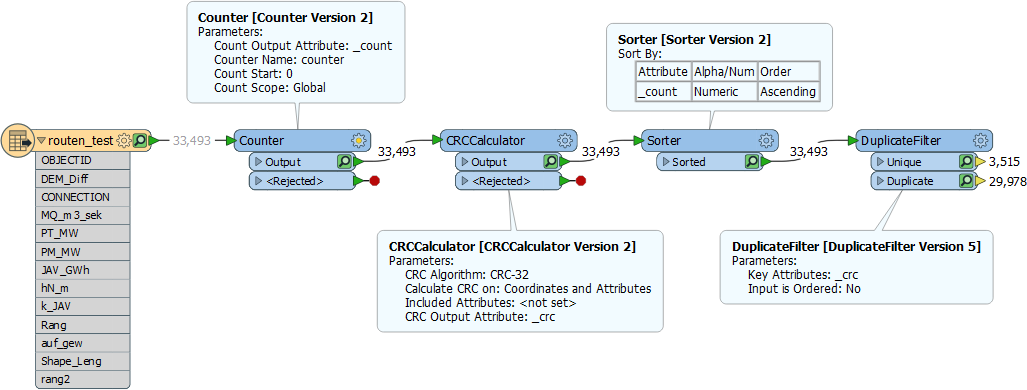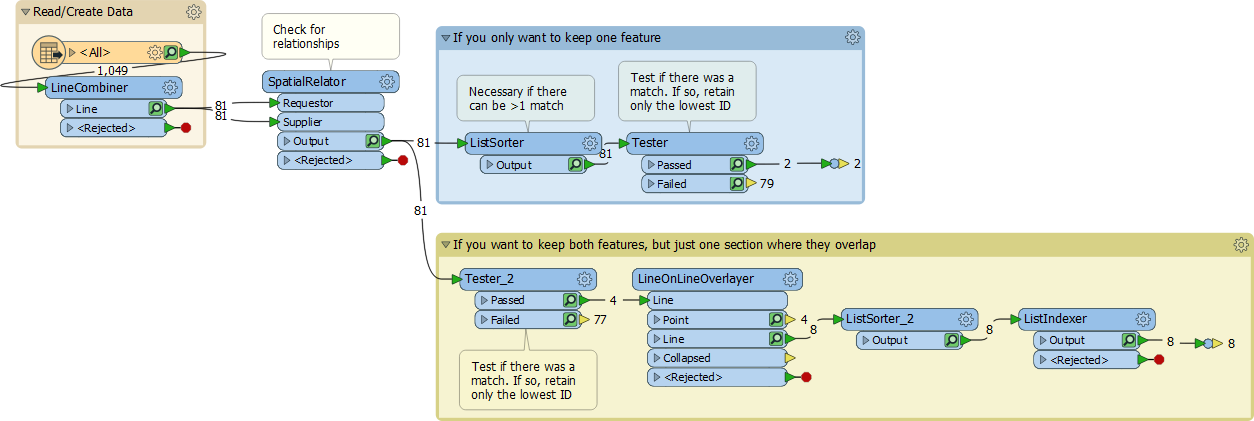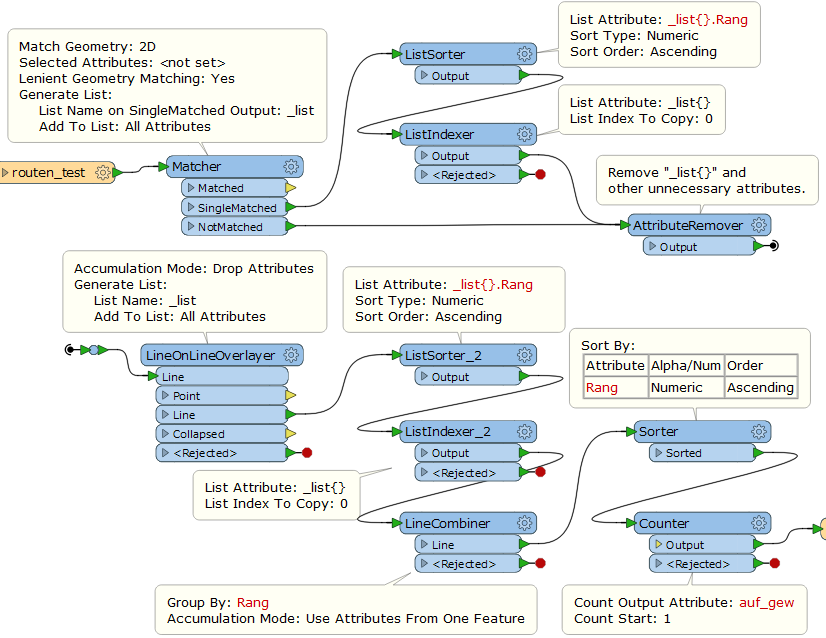I have a lot of lines with two attributes
Attr. 1 Count from 1 to xxxxxxx
Attr. 2 Range set default as 0
Now i have to make a loop workflow...
-Select lowest number from attr.1 and set attr.2 with "1"
now go all other lines through and check if there is a segment equal than the first feature we selected (many lines have same segments...in the end i want only 1 line per segment )
if there are detected same segments delete these lines
after that select the next lowest number in attr. 1 which are still available and set attr.2 with "2"
and so on and so on
i will try it by myself, but any ideas are welcome
Cheers
Franco















